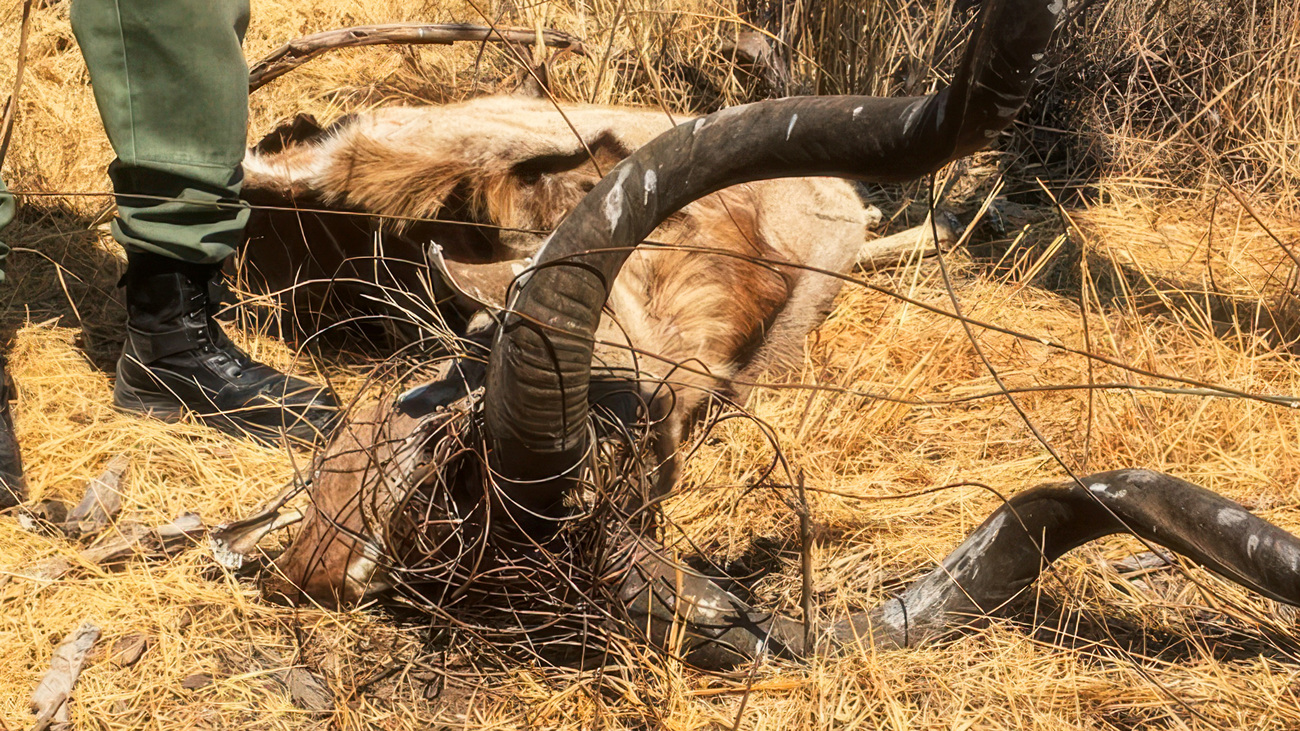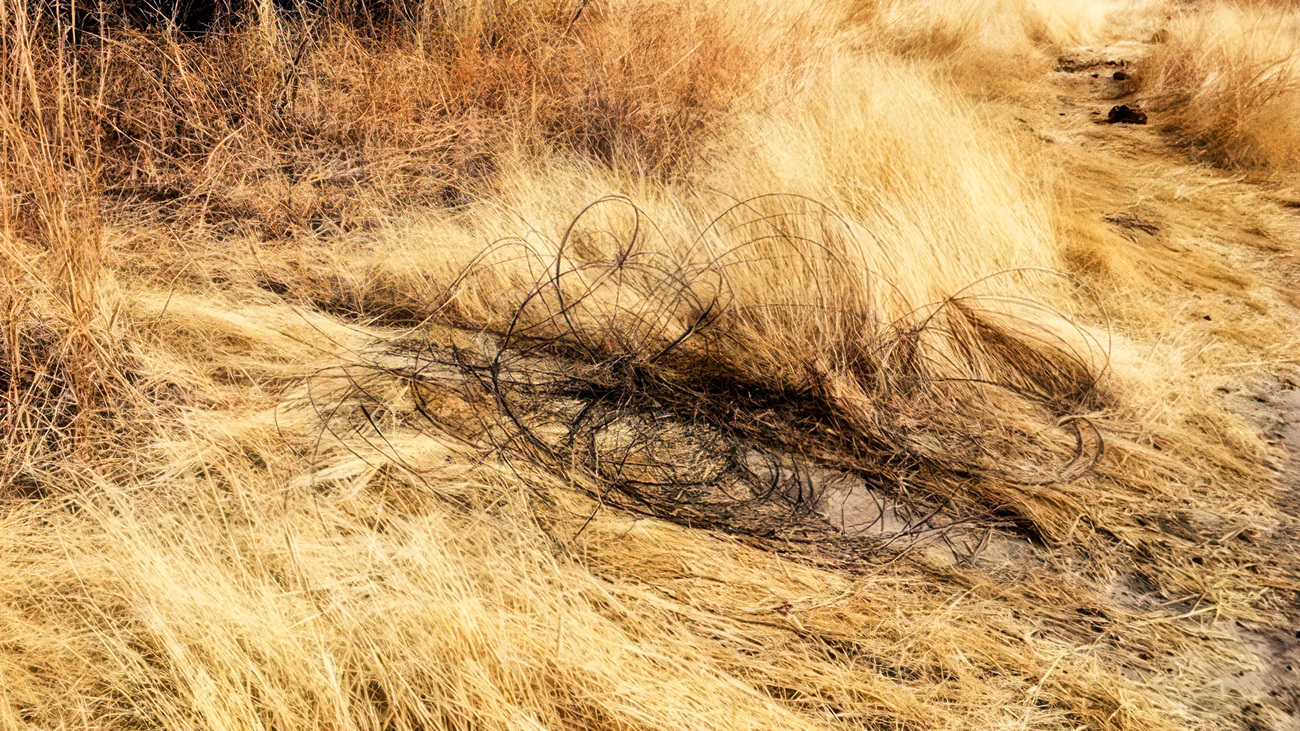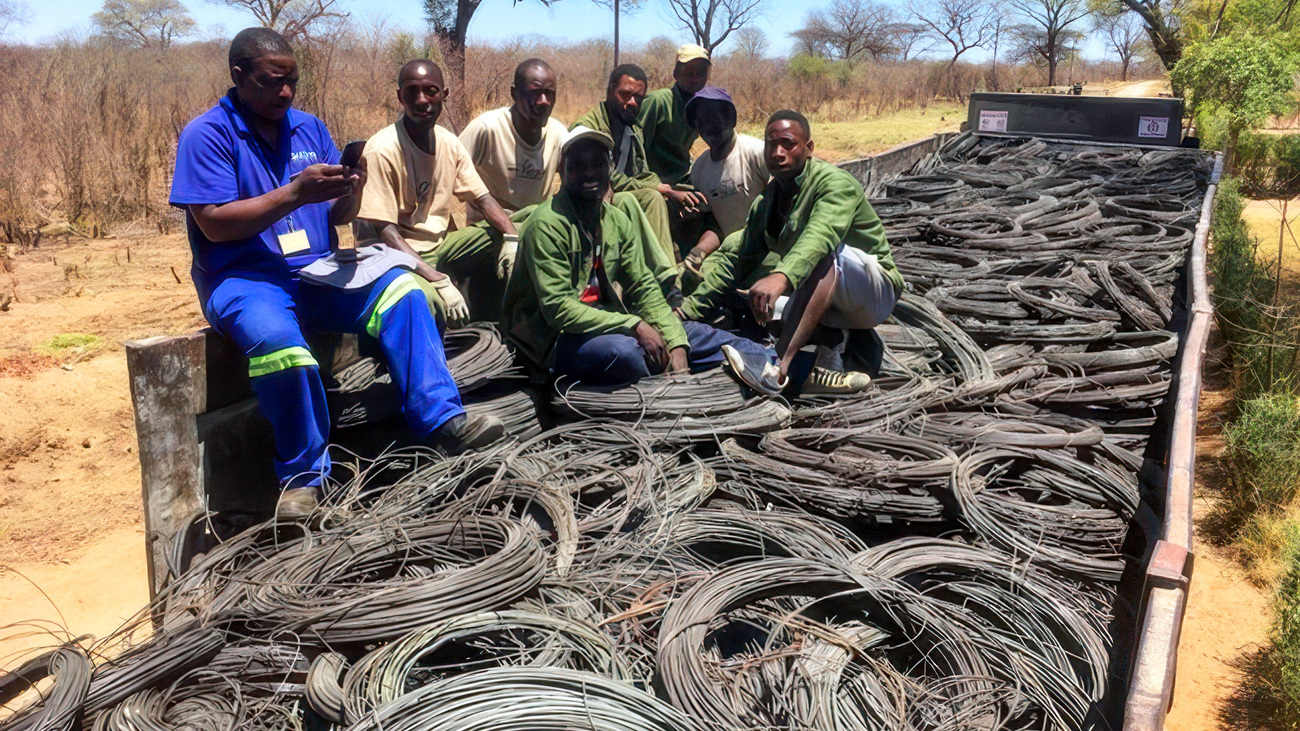Decades-old telephone wires present a ‘catastrophic’ threat to wildlife
Decades-old telephone wires present a ‘catastrophic’ threat to wildlife
by Arnold Tshipa, Field Operations Manager, Zimbabwe
The eastern edge of Zimbabwe’s oldest and largest wildlife sanctuary, Hwange National Park, is defined by a railway, along which runs an ancient telephone wireline weaving through the park’s buffer area. For years, it served as a vital link for communication—until affordable mobile technology put a phone in everyone’s pocket, and wires and poles fell into disrepair.

The disused and fallen telephone wirelines that now litter the expansive Hwange National Park boundary have undergone a disturbing transformation.
Dete Animal Rescue Trust (DART) Program Director Paul de Montille is among those concerned that abandoned telephone lines have turned from a helpful tool into a ‘catastrophic’ threat to Hwange’s diverse wildlife.
‘We have noticed over the years that poachers frequently craft wire snares from the disused high tensile steel telephone wire cables,’ he says. ‘We’ve found lions, kudus, buffaloes, impalas, and zebras ensnared in these cruel and indiscriminate traps.’
Even giraffes can’t escape. An adult female giraffe can grow up to four metres tall, and a male up to five metres. We have found telephone wire snares set by poachers two metres high in the trees specifically to catch giraffes in a deadly trap.
IFAW supports DART in its rescue of snared and injured animals found in or around Hwange National Park. Between February and August 2024, DART’s community scouts recovered 675 wire snares from a 20-kilometre buffer area bordering Hwange National Park. Most were crafted from fallen telephone wires.
Removing fallen wires prevents wildlife crime

With the endorsement of TelOne, a state-owned telecommunications entity, and the support of IFAW, the DART team has been conducting an extensive three-month exercise to remove disused telephone wires in and around Hwange National Park. The mission’s focal point was the old telephone exchange based in the town of Dete, from where a vast network of lines radiated out to the homes and offices of every telephone subscriber in the area. The bulk of these lines ran along the eastern border of Hwange National Park from the Chokalema River, situated 20 kilometres north of Dete Town, to the park’s Ngamo gate, 85 kilometres south.
This area is renowned for its exceptional biodiversity. It serves as a refuge for sable and roan antelope and is also unfortunately a prime hunting location for majestic megafauna like lions. Many animals here have fallen victim to these brutal and lethal traps.
’As we conducted the telephone wire removal, we came across evidence of snaring in this section of the park, including some carcasses of animals which fell victim to the wire snares,’ says De Montille.
Encountering the remains of a male kudu, with its magnificent horns ensnared in a discarded telephone wire, was undoubtedly the most heartbreaking part of the telephone wire removal exercise.
‘It was evident that the beautiful animal had endured a prolonged and agonising struggle, trapped in the fallen telephone wire for hours without assistance,’ De Montille says. ‘Even if the telephone wire is not set as a trap by poachers, the fact that it is on the ground poses a danger to wildlife, and many animals find themselves entangled in the wire.’
At the end of this exercise, the DART Team collected 623 kilometres—a staggering 26 tonnes—of telephone wire, potentially preventing the making of more than 200,000 snares, which could have killed thousands of wildlife.
‘We are incredibly thankful for the tireless efforts of the DART team to remove the old phone lines and safeguard our precious wildlife,’ says Neil Greenwood, IFAW Wildlife Rescue Program Director. ‘We passionately believe that such efforts will help transform the area into a haven for wildlife.’
Creating a safe environment for animals to thrive

While finding, untangling, and rolling up this dangerous wire proved frustratingly slow and time-consuming, the results were worthwhile.
‘Every single animal is critical,’ Greenwood stresses. ‘By recovering such a substantial amount of wire, we are actively contributing to preserving many species.’
The continued efforts to keep the Hwange National Park buffer areas safe from wire snares have also resulted in the return of wildlife to the area. Over the years, resident populations of mammals and birds have gradually returned to the DART operational area.
‘It is most satisfying and rewarding to see the return of wild animals, including impala, kudu, bushbuck, steenbok, hyena, vervet monkeys, genets, mongooses, leopard, lion, and elephants,’ says De Montille. ‘The flourishing wildlife shows a system in recovery.’
Related content
Our work can’t get done without you. Please give what you can to help animals thrive.